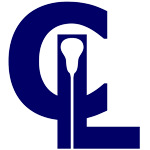Tusculum College
Profile
Size
2 / 10Cost
5 / 10Selectivity
3 / 10-
Team Conference
South Atlantic (SAC)
-
College Type
4-year, Private non-profit
-
Campus Type

Town: Distant
Student Body
Gender
- Male
- Female
Enrollment
- Full Time
- Part Time
Geography
- In-State
- Out-of-state
- Foreign
- Other
Ethnicity
- White
- Black
- Asian
- Latino
- Foreign
- Other
Other includes American Indian, Native Alaskan, Native Hawaiian or other Pacific Islander, two or more races and unknown race / ethnicity.
Coach Recruiting Interview
Stand out and get noticed. Lacrosse is growing at the youth and high school levels at a faster rate than at the collegiate level, resulting in a slightly more competitive landscape in the college recruiting process. All players should be determined and prepared to work hard to impress college coaches and show them why you belong on their roster.
We had the opportunity to speak with Coach Richard Carrington of Tusculum College about the college recruiting process, and he expressed the importance of standing out and getting noticed by coaches, not only of D2 schools but of all divisions.
What advice do you have for players interested in playing D2 lacrosse?
Student-Athletes interested in attending a NCAA D2 institution should start by speaking with coaches about the differences between the three NCAA divisions. D1 and D2 are the only divisions that can provide athletic scholarships, and they’re the only divisions that require student-athletes to register with the NCAA Eligibility Center. However, D1 and D2 are not identical. D1 and D2 have different requirements for eligibility. There are more differences between the three divisions, but those are some of the more prominent differences. Regardless of the division a student-athlete gravitates to, it is important that he or she find the division that is both an academic and athletic fit.
What is the best way for players to get on your recruiting radar?
Persistent communication is always the best way for recruits to get on our radar. In today’s recruiting landscape, coaches are being bombarded by emails from interested prospects. Recruits need to stand out by being persistent and personal when communicating with coaches. Research the school before you contact the coach. We do not offer engineering at Tusculum, so if a recruit emails me and states that he’s looking to major in engineering, that tells me that this recruit has not done any research and this email probably went to about 50 other college coaches. Also, include links to your game film in your emails to college coaches, and let coaches know where you’ll be playing in the fall and summer tournament season.
What areas of player development would you recommend players to focus on?
As boring as it sounds, all positions must focus on their stick skills. At our level, we really do not spend too much time teaching how to catch and throw. We put our student-athletes in drills and game-like situations to practice stick work at full speed and under pressure. If a student-athlete comes to us, and he cannot demonstrate that level of stick work, most of his practice will probably be spent hitting the wall.
What’s a question, specific to Tusculum College you wished players asked you more during the recruiting process?
I wish more prospects would ask about our very unique academic structure we offer at Tusculum, which we call the Block System. The Block System allows our students to take just one class for 18 days. The exam for that class is on the 18th day, and then you’re done with that class forever. We then have a four-day Block Break with no school, and when we return, students take a new class for 18 days. The Block System allows our students to focus on just one subject at a time. Our students do not have to skip around from math to English and then to science. Our students also do not have to cram for five exams at the end of the semester. Additionally, our students still have their weekends off and receive all the traditional breaks you’d find at most colleges (i.e. Fall Break, Winter Break, Spring Break, etc).
What type of player do you look for–raw athlete or refined lacrosse player?
At Tusculum we’re looking for prospects that standout in at least one area of skill or athletic attribute. Raw athletes typically lack in consistent stick skills and lacrosse IQ, so for us to recruit them, we need to see superior speed, agility, strength, or size. In more refined lacrosse players, we’re looking for prospects who excel in shooting, feeding, and demonstrating a general “slickness” in their game.
What is special about being a student-athlete at Tusculum?
Being a Tusculum Pioneer means that you’re accepting the challenge of building our second-year lacrosse program into a perennial contender in D2. At Tusculum, we feel that our students enjoy an educational setting that is conducive to being a student-athlete. We offer an academic system that fits the hectic training schedule of an athlete. We also feature some of the best athletic facilities in D2. Tusculum is one of the few schools in our region to have an indoor turf practice facility, which allows us to play box lacrosse or practice inside if there is inclement weather.
How has the accelerated recruiting landscape impacted your approach to recruiting?
I am not an advocate of the accelerated recruiting landscape, but the negative effects of early recruiting haven’t really hurt D2 schools yet. When I started coaching collegiately ten years ago, there were still plenty of D1 prospects floating around in the fall of their senior year. Now, the D1 prospects are generally committed well before they begin their senior year of high school. This may make life easier for D2 and D3 coaches, but ultimately, I think it is bad for college lacrosse. Our transfer rates are at an all-time high, because prospects are rushing into decisions.
What are your do’s and don’ts, likes and dislikes of recruiting videos? If you have any.
We actually ask our recruits to include one or two of their best games along with a highlight film, because anyone can look good in a highlight film. At the D1 and D2 level most coaches won’t award athletic scholarship money based on a highlight film alone. When I watch recruit films, I like to see prospects playing against good competition. I also want to see them making some mistakes, because so much of our game is displaying the ability to respond from mistakes.
Some final thoughts from Coach Carrington
This is a great time to be a college lacrosse coach, because there are so many prospects out there. Our game is growing at the youth and high school level at a much faster rate than the collegiate level. You have to put in the work to become recruited. Develop the skills that will make you stand out on the field during summer tournaments. Play multiple sports in high school. Get some good game and tournament film. Be persistent when communicating with coaches. Coaches are on the road all summer looking for ideal prospects, and we’re going to find them, but it’s even better when a quality prospect finds us first.
ConnectLAX is a third party recruiting service and not affiliated with or endorsed by Tusculum College or Richard Carrington.
Team Road Trips
The Tusculum College will begin Division II men's lacrosse competition in the spring of 2015. The team will play in the South Atlantic conference.
Recruit Commits
2021 | |||
Hometown |
Position(s) | ||
| Alexander Germain |

|
Gansevoort, NY | Goal |
| Alex Germain | South Glens Falls, NY | Goal | |
2020 | |||
Hometown |
Position(s) | ||
| Jordan Mauro | Montgo Mery, NY | Def | |
| TJ Caldwell | Gulf Breeze, FL | Mid | |
| Jordan Mauro | MontgoMery, NY | Def | |
2018 | |||
Hometown |
Position(s) | ||
| Addison Wilkins | Spartanburg , SC | Faceoff, Mid | |
| Nathan Fraser |

|
Kamloops, BC | Mid, Faceoff |
| Addison Wilkins | Spartanburg , SC | Faceoff, Mid | |
| Addison Wilkins | Spartanburg , SC | Faceoff, Mid | |
| Peyton Woodward | Salem, VA | Goal | |
2017 | |||
Hometown |
Position(s) | ||
| Patrick Thomas | Fort Mill, SC | Goal | |
| Luke Doehring | Fort Knox, KY | Att | |
2016 | |||
Hometown |
Position(s) | ||
| Will Bender | Apex, NC | Goal | |
| Tyler Beebe | Raleigh, NC | Def | |
| Trey Carney | Lexington, KY | Faceoff, Def | |
| Adrian Brown | Raleigh , NC | Att, Mid | |
| Todd Lloyd | Haymarket, VA | Mid | |
| Will Bender | Apex, NC | Goal | |
| Todd Lloyd | Haymarket, VA | Mid | |
| Adrian Brown | Raleigh , NC | Att, Mid | |
| Matt Petraglia | Fallston, MD | Goal | |
| Trey Carney | Lexington, KY | Faceoff, Def | |
| Tyler Beebe | Raleigh, NC | Def | |
| Will Bender | Apex, NC | Goal | |
| Adam Isaac | Canandaigua, NY | Def | |
| Ryan Pickering | West Haven, CT | Goal | |
2015 | |||
Hometown |
Position(s) | ||
| Charles Mills | Vernon, NJ | Att | |
| Caleb Mayhew | Fort Pierce, FL | Mid, Att | |
| Charles Mills | Vernon, NJ | Att | |
Events By Tusculum College Coaches
Location
Team Videos
Where Grads Live
- Knoxville Tennessee Area
- Johnson City Tennessee Area
- Greater Atlanta Area
- Chattanooga Tennessee Area
- Greater Nashville Area
- Greater New York City Area
- Washington D.C. Metro Area
- Charlotte North Carolina Area
- Raleigh-Durham North Carolina Area
- Greater Memphis Area
- Greenville South Carolina Area
- Cincinnati Area
- Tampa/St. Petersburg Florida Area
- Greater Philadelphia Area
- Houston Texas Area
Where Grads Work
- Tennessee Valley Authority
- Oak Ridge National Laboratory
- Whirlpool Corporation
- SAIC
- Covenant Health
- Knox County Schools
- Eastman Chemical Company
- Mountain States Health Alliance
- State of Tennessee
- AT&T
- TeamHealth
- DENSO
- John Deere
- ORAU
- University of Tennessee
What Grads Do
- Operations
- Sales
- Education
- Human Resources
- Support
- Information Technology
- Administrative
- Finance
- Entrepreneurship
- Program and Project Management
- Healthcare Services
- Consulting
- Community and Social Services
- Marketing
- Engineering
Niche Grades
Overall Experience

Student Life

Professor Rating

Academics

Athletics

Campus

Academics
Test Scores
This range represents the middle half of incoming freshman from the 25th to 75th percentile. The writing component is now optional and no longer reported.
This distribution represents incoming freshman test scores and GPA on 4.0 scale.
Admissions
Total |
Male | Female | |
| Applicants | 1,965 | 855 | 1,110 |
| % Admitted | 72% | 68% | 76% |
| % Admits That Enroll | 21% | 24% | 18% |
| Incoming Freshman Average GPA | 3.17 |
Admission Considerations
Required | Rec. | |
|---|---|---|
| High School GPA | ||
| High School Rank | ||
| High School Transcript | ||
| College Prep Classes | ||
| Recommendations | ||
| Demonstrate Competencies | ||
| Admission Test Scores | ||
| Other Tests (Wonderlic, etc.) | ||
| TOEFL (English proficiency) |
 Admissions office
Admissions office
Majors / Programs
Degrees offered by popularity. Type = Bachelor.
 Athlete graduation rate
Athlete graduation rate
Financial
Net Price
Average net price = sticker price - financial aid.
$17,533
Average net price by income for incoming freshman receiving financial aid.
Net price for all students (private non-profit and for profit institutions).
Sticker Price
Sticker price = estimated total cost of attendance.
Undergraduate | ||
On Campus | ||
| Tuition & Fees | $24,860 | |
| Books & Supplies | $2,964 | |
| Cost of Living | $9,340 | |
| Personal Expenses | $4,808 | |
| Sticker Price | $41,972 | |
Personal expenses includes laundry, transportation, entertainment and furnishings.
Financial Aid
100% of full-time, incoming freshman receive financial aid.
Receiving Aid % | Avg. Aid Amount | |
Type of Aid | ||
| Grant or Scholarship | 100% | $21,282 |
| Federal Grants | 55% | $5,255 |
| Pell Grants | 55% | $4,922 |
| Other Federal | 32% | $635 |
| State & Local Grants | 53% | $5,213 |
| Institutional Grants | 98% | $15,919 |
| Student Loans | 66% | $6,046 |
| Federal Loans | 65% | $5,399 |
| Other Loans | 4% | $11,682 |
All financials shown for full-time, incoming freshman.
Total Amount | Per Student | |
Endowment | ||
| Financial Assets | $22 Million | $12,708 |
Value of endowment assets at fiscal year end.
Debt
Total federal debt after graduation for undergrad borrowers: $24,750.
Total cumulative student debt by percentile.
Total Principal | Monthly Payment | |
| 10 Year Repayment | $17,137 | $263 |
Most student loans have a grace period before repayment begins.
3 Year Avg. Default Rate: 11.9%
Avg. rate for colleges with lacrosse is 5.1%.
Total federal debt excludes private student loans and parent PLUS loans. Cumulative debt cohort includes 1,202 students.
Salary
Earnings 10 years after enrollment: $38,300
Earnings of former students working by percentile.
Earnings of former students who received federal financial aid. Figures shown are median.
Payback
How long until this college investment pays off: 6.28 years.
Median debt and foregone earnings divided by median earnings. Foregone earnings assumes 4 years to graduation; at this school, 31% of students graduate on time.
Team Social
Campus Safety
On Campus |
In Res. Halls |
|
|---|---|---|
Criminal Offenses |
||
| Murder | - | - |
| Negligent Manslaughter | - | - |
| Rape | - | - |
| Fondling | 1 | 1 |
| Incest | - | - |
| Statutory Rape | - | - |
| Robbery | - | - |
| Aggravated Assault | 1 | 1 |
| Burglary | 4 | 4 |
| Motor Vehicle Theft | - | - |
| Arson | - | - |
In Residence Halls are a subset of On Campus statistics. Murder includes non-negligent manslaughter.
The crime data reported by the institutions have not been subjected to independent verification by the U.S. Department of Education. Therefore, the Department cannot vouch for the accuracy of the data reported here. Statistics represent 3-year average data.
Data from The National Center for Education Statistics (NCES), the primary federal entity for collecting and analyzing data related to education.
Carnegie Classifications
Category |
Classification |
|---|---|
| Basic Classification | Master's Colleges & Universities: Medium Programs |
| Undergrad Instruction | Professions plus arts & sciences, some graduate coexistence |
| Graduate Instruction | Postbaccalaureate: Education-dominant, with other professional programs |
| Enrollment Profile | High undergraduate |
| Undergrad Profile | Four-year, full-time, inclusive, higher transfer-in |
| Size and Setting | Four-year, small, highly residential |
Carnegie classifications provide a framework for evaluating comparable schools.
Teams In Conference
Similar Academic Schools
-

-

-

-

-

-

-

-

-

-

-


 See more college grades
See more college grades Free ACT and SAT test prep
Free ACT and SAT test prep Free SAT test prep
Free SAT test prep Free scholarship search
Free scholarship search







